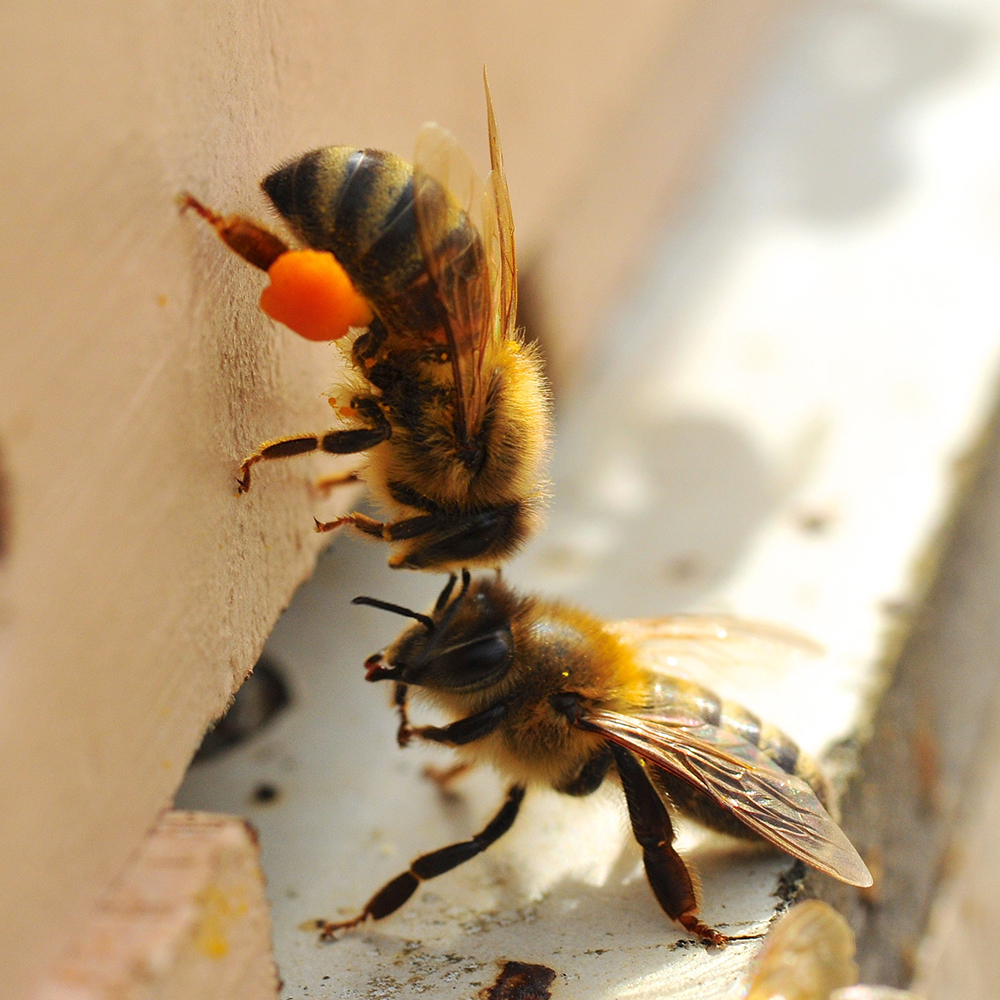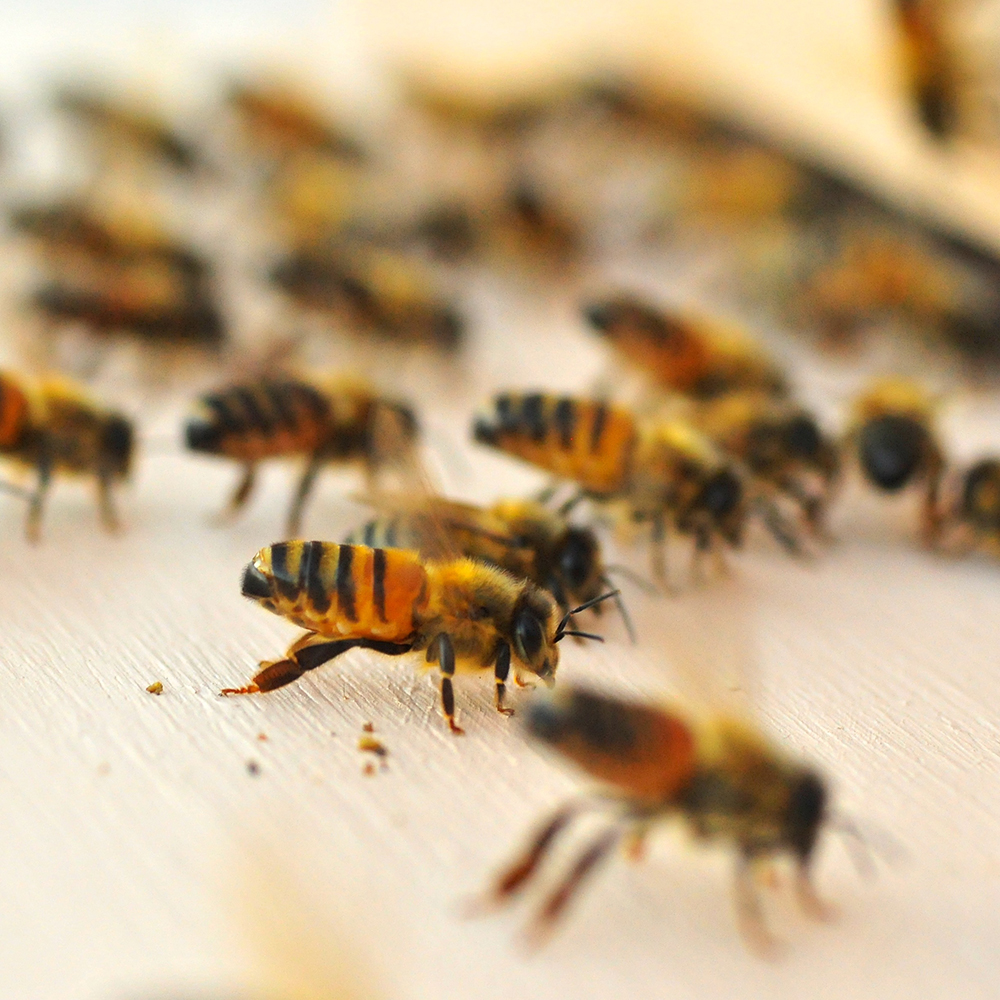Organic Honey vs. Local Honey: A Brief Users Guide

It’s an informative paradox: if you live in a big city like Melbourne you can buy local honey, but it will never be certified organic. And you can buy certified organic honey, but it will never be local.
For urban consumers interested in where their food comes from, food miles and organic choices, this dilemma throws up complex issues about food supply and standards. It forces honey consumers to make a decision about what is more important to them: hyper local honey, or organic honey? Food miles, or food standards?
But it’s okay – informed consumers can make decisions here that benefit bees, beekeepers, good local retailers and, ultimately, their taste buds.
Unlike some vegetables and fruit, dairy and meat produce, which can be produced to organic standards within Greater Melbourne (or, in the case of livestock, a comfortable drive from Melbourne), the guidelines for organic honey production quite rightly take into account the vast area a forager bee (the worker bee collecting nectar, pollen and other plant materials) covers in its hardworking, brief lifetime. The stringent tests a beekeeper must comply with are illustrated by one of the many organic certification organisations in Australia, the National Association for Sustainable Agriculture, Australia (NASAA). It’s NASAA’s Organic Standard that will be referred to here.
Unlike a carrot, a forager bee can fly up to five kilometres in search of food – a big, circular range with a diameter of ten kilometres. To meet the NASAA standard, apiaries need to be smack bang in the middle of a near-pristine environment of just under 80 km² (approximately 20,000 acres). To give you some idea of this expanse, imagine an area that covers Melbourne’s CBD to Brunswick to the north, St Kilda to the south, Yarraville to the west and Hawthorn to the east. That’s a lot of real estate. There are very few locations near Melbourne that are free of industry, conventional farms or flowering roadside weeds untainted by the occasional dose of Round Up. There’s just not enough pristine space for organic bees to forage in or around Melbourne.
As a result, much of the certified organic honey packaged in Victoria is actually produced by bees hundreds of kilometres from Melbourne, often in eucalypt forests in NSW and beyond. The organic accreditation system exists for both the producers (the beekeepers) as well as the packers (the wholesalers who source, package and distribute honey). This can be confusing for consumers: an organic accreditation does not necessarily require declaring a source of origin if that source is within Australia. The label may list a local, organic packing site, but often does not refer to where the honey is sourced from, or who the beekeepers are. As a result, organic honey may be blended from various locations and suppliers. This is in marked contrast to many urban, but non-organic, beekeepers who pride themselves on well-identified, single-source honey.


NASAA accreditation is concerned with many issues, from the selection of sites through to distribution channels and packaging materials. But there are three broad issues of interest here: the foraging range of the bees (to hedge against exposure to contaminants); best organic beekeeping practices; and processing, or extraction, methods.
The good news for urban locavores is that two of three of these standards can be met by good, local beekeepers. The first of these involves the extraction process: if your honey promotes itself as being ‘cold extracted’, or ‘raw’, it means the honey has been kept under 45 degrees celsius during the extraction process. Look for these terms on the label – it guarantees the health benefits of the delicate honey enzymes (that originate in the gut of the bee), and other goodies bees provide (such as wax, pollen and propolis particles), remain undamaged by heat treatment. Heat treatments and fine filtering do result in runny honey and the flip side is that raw honey will crystallise after a few months or in cooler weather. Placing the honey jar in warm water (under 45 degrees celsuis) will return the honey to liquid form, if that’s your preference, but it’s great crystallised too. The slow change affects both texture and taste, in really interesting ways.
Secondly, if your local beekeeper promotes themselves as a ‘natural beekeeper’, as ‘bee friendly’ or ‘sustainable’ (these are broad-ranging terms with various definitions – but that’s another story), it also means that they are managing the bees in a bee-friendly manner that suits both the hive and the honey robber. For example, bees will be left with enough of their own honey to see them through winter (and not robbed of all honey and fed sugar syrup through the cold months, unless absolutely necessary). It also means the beekeeper will not use insecticides like paradichlorobenzine to control wax moth, or antibiotics, such as oxytetracycline, to control diseases such as European Foul Brood (both of which have been used in Australia and attract maximum residue level standards by FSANZ (Food Standards Australia and New Zealand)). The Organic Standard – which, in terms of how bees are managed, is similar to natural beekeeping practices – ensures that the inside of the beehive is not painted, and that only acrylic paints are used externally (or are not painted at all). Additionally, practices such as clipping the wings of queen bees (to stop swarming – the effectiveness of which is debated even among conventional beekeepers) is also forbidden.
This is technical stuff but it’s these kinds of issues, the associated extra legwork, and, arguably, a lower honey yield (many kilos of the good stuff are left in the hive each winter) that attract the premium prices of organic honey or local honey produced with natural beekeeping practices. Additionally, the paperwork and investment involved in gaining organic accreditation is significant and costs are passed on to consumers. The regulatory effort and expense is also why many beekeepers sell organic honey that isn’t accredited – the accreditation process is seen by some to be too burdensome.
The third issue the Organic Standard is concerned with is the foraging range designed to mitigate bee exposure to contaminated food sources. Due to the high standards required of the environment organic beehives are placed in, this is the one thing that urban beekeepers simply cannot match. The NASAA standard, its associated apiary inspections and honey samples kept for testing (if required) ensure that this honey is about as free from contaminants as you’re ever going to get. But, some would argue, it’s still no guarantee that broad-ranging bees aren’t exposed to some unwanted nasties.
To counter that argument, urban beekeepers such as Melbourne City Rooftop Honey argue that city bees rarely experience the kind of food-supply stress that their bush cousins (organic or conventional) sometimes do. Eucalypt-dominated forests are a gold mine of nectar when the conditions are right and a good flow is on. But they are also fickle environments and often respond to unseasonal weather by not flowering as expected. This has just occurred in many parts of the east coast of Australia. A wet spring, bushfires and record-breaking heatwaves in summer threw natural rhythms out of whack. The poor season resulted in lower honey yields than usual. That means less honey for the bees, and less honey for the table.
In contrast to this, there’s a constant pollen and nectar flow in urban areas. The patchwork of exotic flowering plants, well cared for and watered by many backyard gardeners, ensures there’s usually something on offer for city bees. And, the argument goes, this diversity and certainty of bee food supply results in healthier and happy bee populations. Another pro-urban argument is that there is nowhere near the amount of agrochemicals (fertilisers, herbicides and insecticides) used in the city as there is in broadacre farms in the bush.
In summary, the situation with organic versus local honey is typical of many food ethics debates. It’s complex. There are trade-offs. You can reduce food miles and support local producers, but the honey won’t be certified organic. You can buy certified organic honey that is, debatably, contaminant free, but it won’t come from your backyard. Sometimes there just isn’t enough local, urban honey to support demand – it often sells out. So the larger, commercial apiaries, that are bee-friendly, play their role too. There is no magic bullet solution; no absolute truths. The best you can do is be an active consumer: support retailers who stock a range of local and organic honeys, read food labels, visit your favourite honey brand’s website and read it critically. Or, if you meet a beekeeper, ask them how they manage their hives and what their views on these topics are. Better still – get your own beehive.
But most of all, be flexible – buy urban AND organic honey! Support all ethical beekeepers – near and far – because bees need them. And their honey is the sweetest.
Nic is the founder of Honey Fingers studio, a creative and collective project exploring the connections between farming, food, art, history, design and education, whose work always revolves around bees. Check out the Honey Fingers Instagram: @honey_fingers
Many thanks to photographer Peter Debicki for his images and advice.

